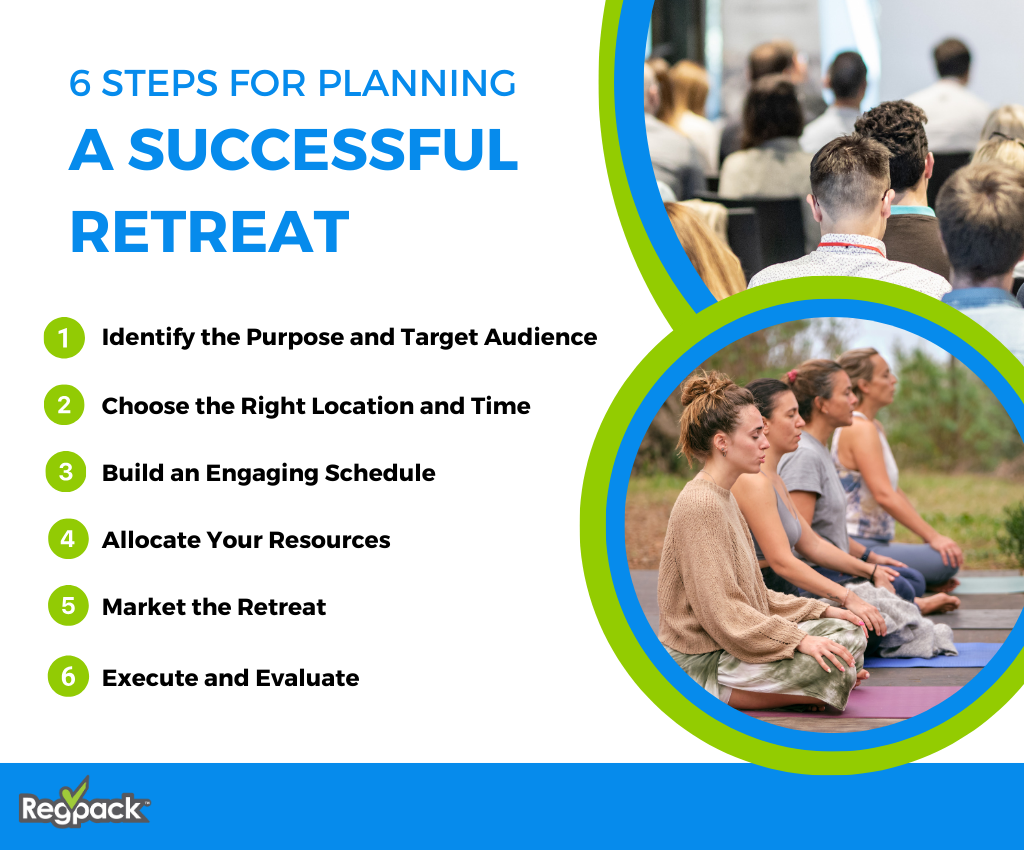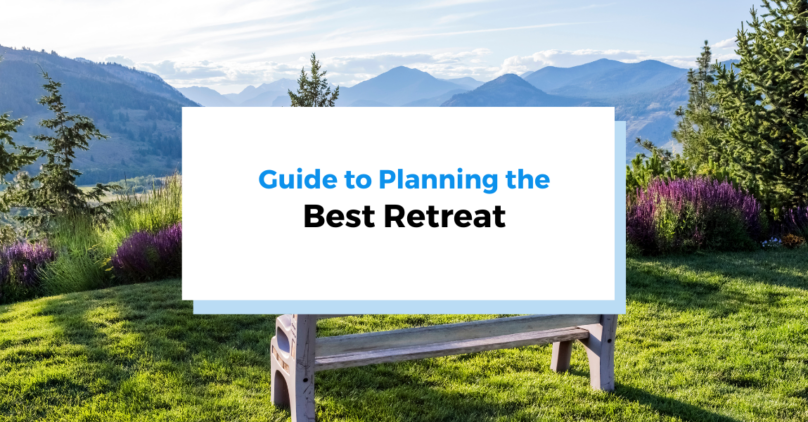Offering retreats gives your participants a unique opportunity to step away from the hustle and bustle of everyday life. Whether it’s searching for peace, engaging in wellness activities, or finding creative inspiration, retreats accommodate a wide variety of personal and group needs.
However, the process of creating a retreat does not come without its challenges. The planning process involves attention to detail and a thorough understanding of the retreat’s objectives. It entails coordinating locations, activities, and accommodations that align not just with the theme but also with the expectations of attendees.
Different Types of Retreats
Retreats have the power to rejuvenate, inspire, and promote productivity, be it an individual, a group, or an entire company. They offer opportunities for personal development, relaxation, or team-building in different settings.
Whether it’s a wellness retreat to revive inner peace in nature or a group retreat to foster unity among team members – each comes with its unique value proposition.
A solo retreat offers individuals the chance to reflect or work on personal projects without interruptions. Spiritual retreats aim to deepen participants’ practices away from the distractions of modern life. On the other hand, company retreats and corporate retreats focus on team-building, strategic planning, and strengthening professional relationships in a relaxed setting.
Each retreat type has its unique appeal, driven by the desire to escape the ordinary and learn new things.
6 Steps for Planning a Successful Retreat
Now that you have a clearer picture of what your retreat could look like, it’s time to get down to the real business: the planning process. Here is a 6-step guide to help you navigate the path toward a successful retreat.

1. Identify the Purpose and Target Audience
Start by clarifying the retreat’s goals and who it is for. Understanding “why” and “who” you are planning a retreat for sets the foundation for the entire planning process. Are you aiming for team-building within your company, overall wellness in a yoga retreat, or a quiet writing retreat for a small group of authors?
Understanding your objective and audience is key. It clarifies the retreat’s direction and ensures every element resonates with the participants, making the experience more impactful and meaningful for them. Once you have determined the specific goals, designing the rest of the retreat becomes more straightforward.
2. Choosing the Right Time and Location
Finding the right location and timing sets the tone for the entire retreat. The retreat location should align with your retreat’s objectives, offering the appropriate atmosphere and facilities to support your activities.
Consider a retreat center or conference center that matches your theme, such as an exotic location for a personal retreat or a quiet retreat facility for a meditation retreat. Ensure the site is accessible to all of your group members.
Timing is equally crucial; consider factors like work schedules, school holidays, and seasonal weather patterns to choose a date that maximizes attendance and enjoyment. It’s also important to consider your group members’ and retreat leaders’ travel constraints.
Accessibility is key—ensure the location is within reasonable travel distance for your target audience, and consider providing transportation options if necessary.
Whether it’s a weekend retreat or a week-long affair, the date and location should be selected with utmost thought.
3. Build an Engaging Schedule
Crafting an engaging retreat schedule is an art. It’s all about finding the right balance of structured activities with free time so your participants feel engaged without being overwhelmed. Give your participants the opportunity to explore, connect, and unwind besides attending the planned sessions.
Offer a range of activities that cater to different interests and energy levels. It is important to understand the physical and skill levels of your participants. The goal is to provide activities that are accessible and enjoyable for everyone. This could include outdoor adventures for the more physically active participants, workshops or seminars for those interested in learning, and relaxation sessions like yoga or meditation for attendees looking to unwind.
Make it clear that all activities are optional and encourage your participants to choose based on their interests and comfort levels.
When building out your schedule, planning meals and selecting restaurants are important components that significantly impact the overall experience. It’s essential to consider various factors, such as participants’ food allergies and dietary restrictions, to meet the needs of all attendees.
It’s also important to have a contingency plan for unforeseen issues like bad weather or health emergencies. Flexibility and preparedness ensure a smoother experience for both organizers and participants.
4. Allocate Resources
Determine your required resources and how to best utilize them. This includes everything from people to budget. It’s all about ensuring you have the necessary arrangements in place for a smooth and hassle-free retreat. Every aspect of the retreat should be covered by someone capable and reliable.
Do not forget to factor in food allergies, dietary restrictions, and other essential details when you’re planning your schedule.
Don’t overlook the power of technology! Leveraging retreat registration software like Regpack simplifies the registration process. It handles sign-ups, payments, and communication, making management easier for retreat planners and hosts.
5. Market the Retreat
It’s crucial to let your potential participants know about the retreat. Effective promotion through social media, email marketing, targeted ads, and word of mouth is essential to attract the right attendees.
Highlight what sets your retreat apart, whether it’s an exclusive location, expert-led sessions, or unique activities. Engaging content like testimonials, sneak peeks, and early bird offers can boost interest and registrations.
Ultimately, tailor your message to your target audience and highlight what makes your retreat unique.
6. Execution and Evaluation
Lastly, execute your plan! With careful planning, your retreat should unfold smoothly!
After the retreat, take the time to evaluate the event’s success. Collect feedback from attendees to understand what worked and what could be improved. This insight is invaluable for planning your next retreat.
Remember, the entire process might seem like hard work, but with a tool like Regpack, you can significantly ease your burden. Our online registration system can simplify your tasks like registration, payment facilitation, and management of the event.
Conclusion
Planning a retreat, whether it’s for personal growth, wellness, or professional development, requires hard work and dedication. By following a step-by-step guide and focusing on the details, you can orchestrate a successful retreat that leaves a lasting impact on its participants. Remember, the success of a retreat lies in the careful balance of relaxation, engagement, and learning.
As you plan your first retreat or look to improve your next one, remember that the core of a successful retreat lies in its authenticity and the value it provides to its attendees. Make sure your retreat lives up to its promise and offers a refreshing, inspiring experience for everyone involved.
Throughout the entire process, from selecting the right location to crafting the perfect retreat schedule, Regpack is your ally. This powerful online registration software streamlines the tedious aspects of planning, allowing you to focus on creating an unforgettable experience.
Our mission is to help you host an unforgettable retreat without breaking a sweat over registrations and management.


















